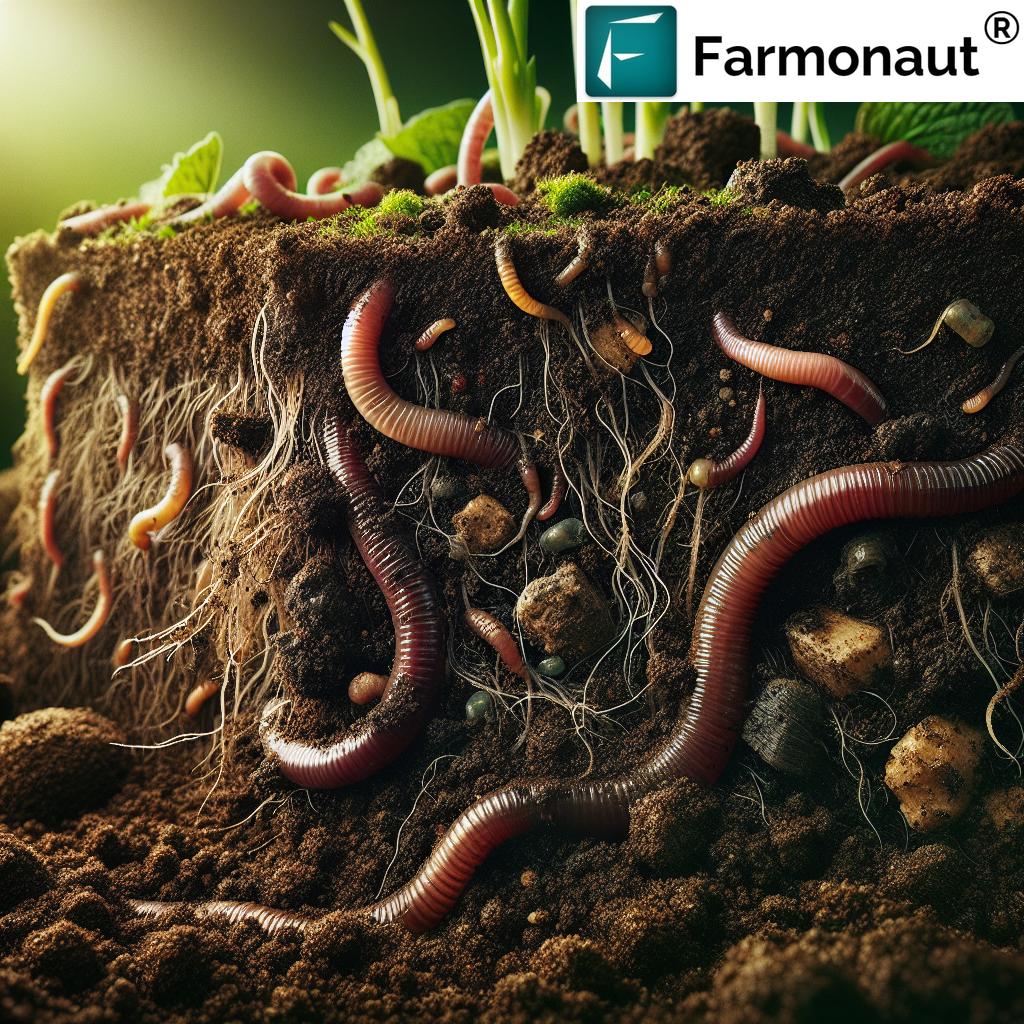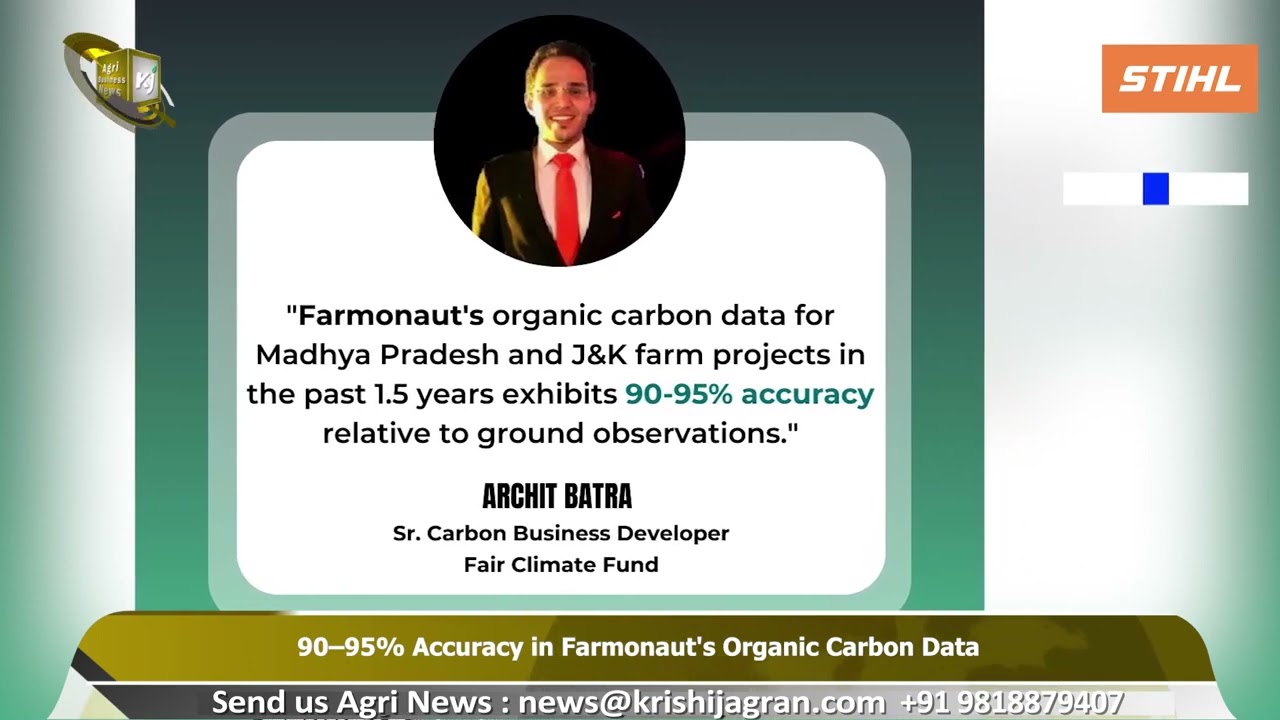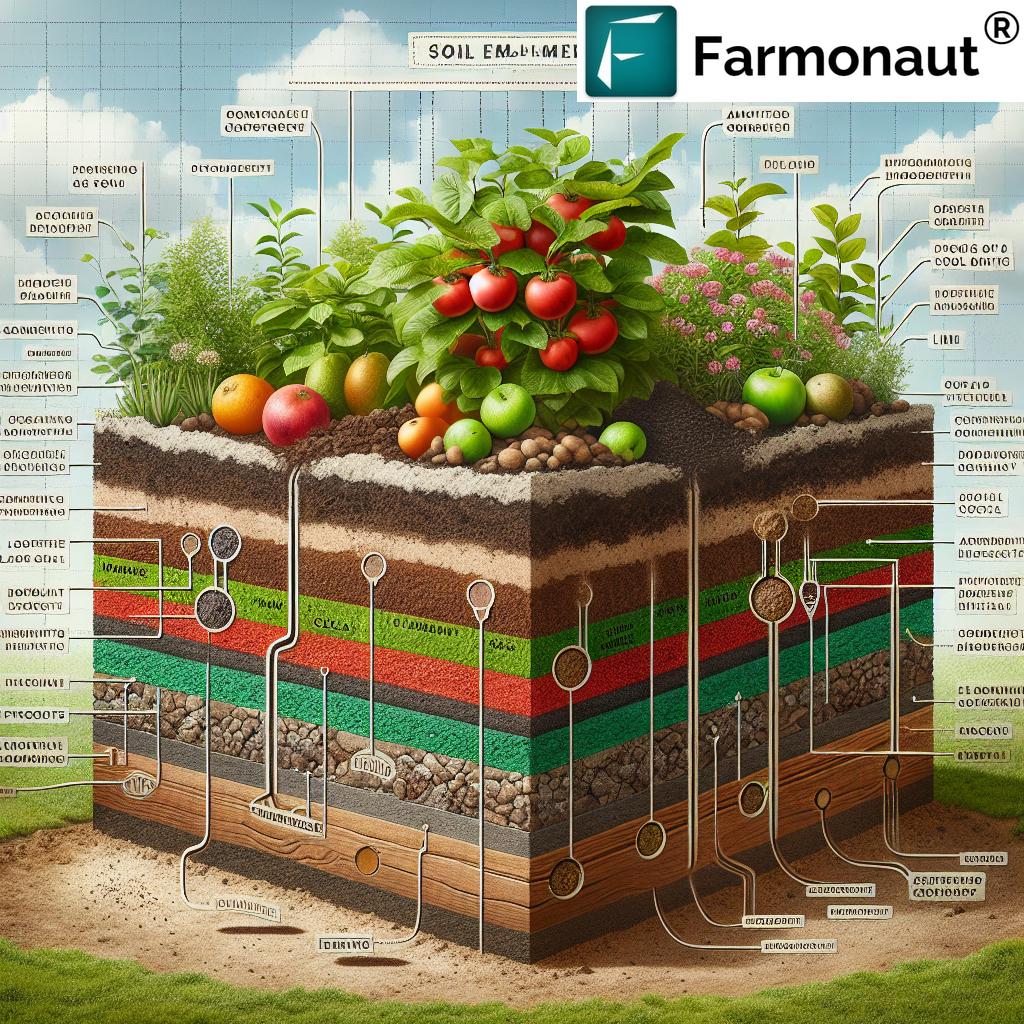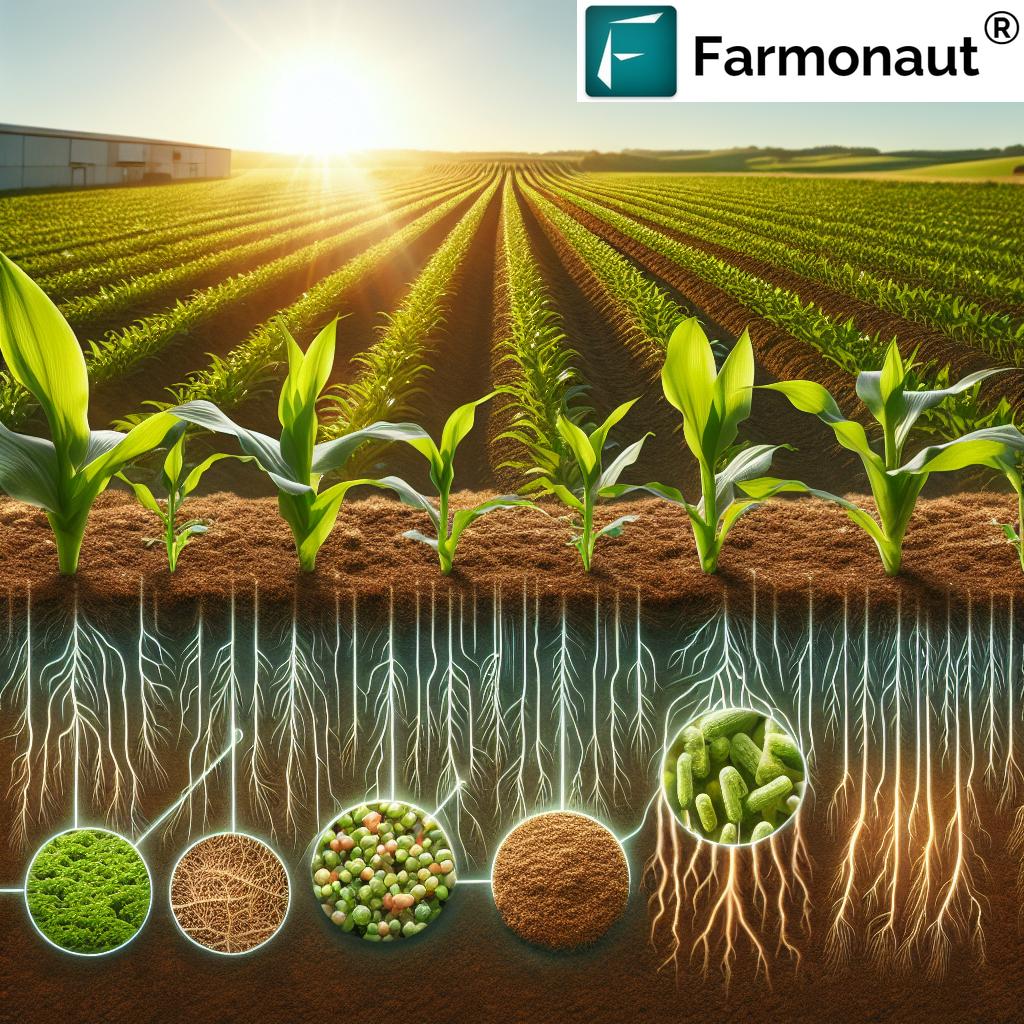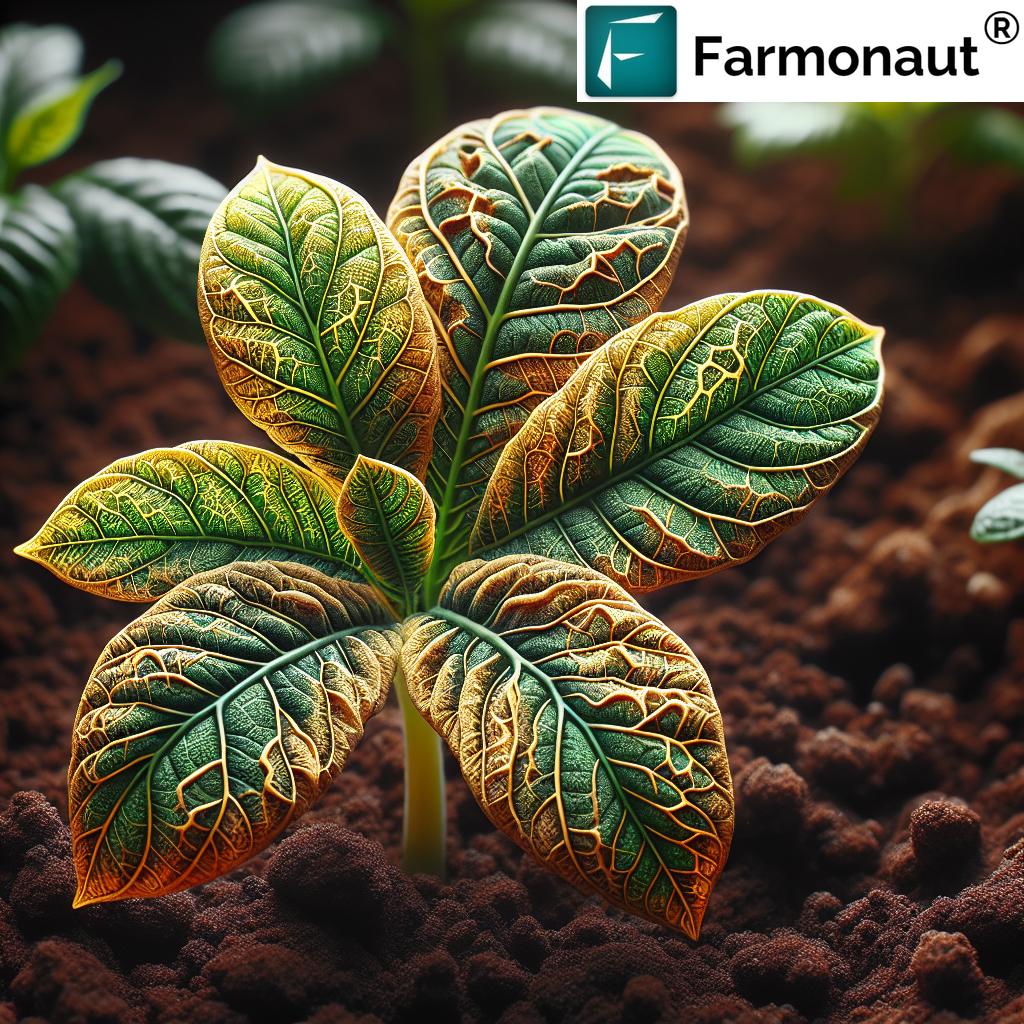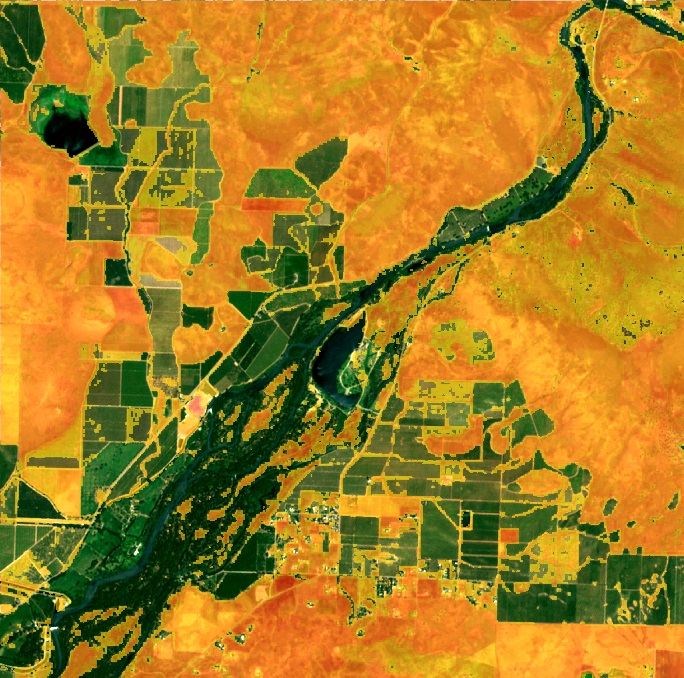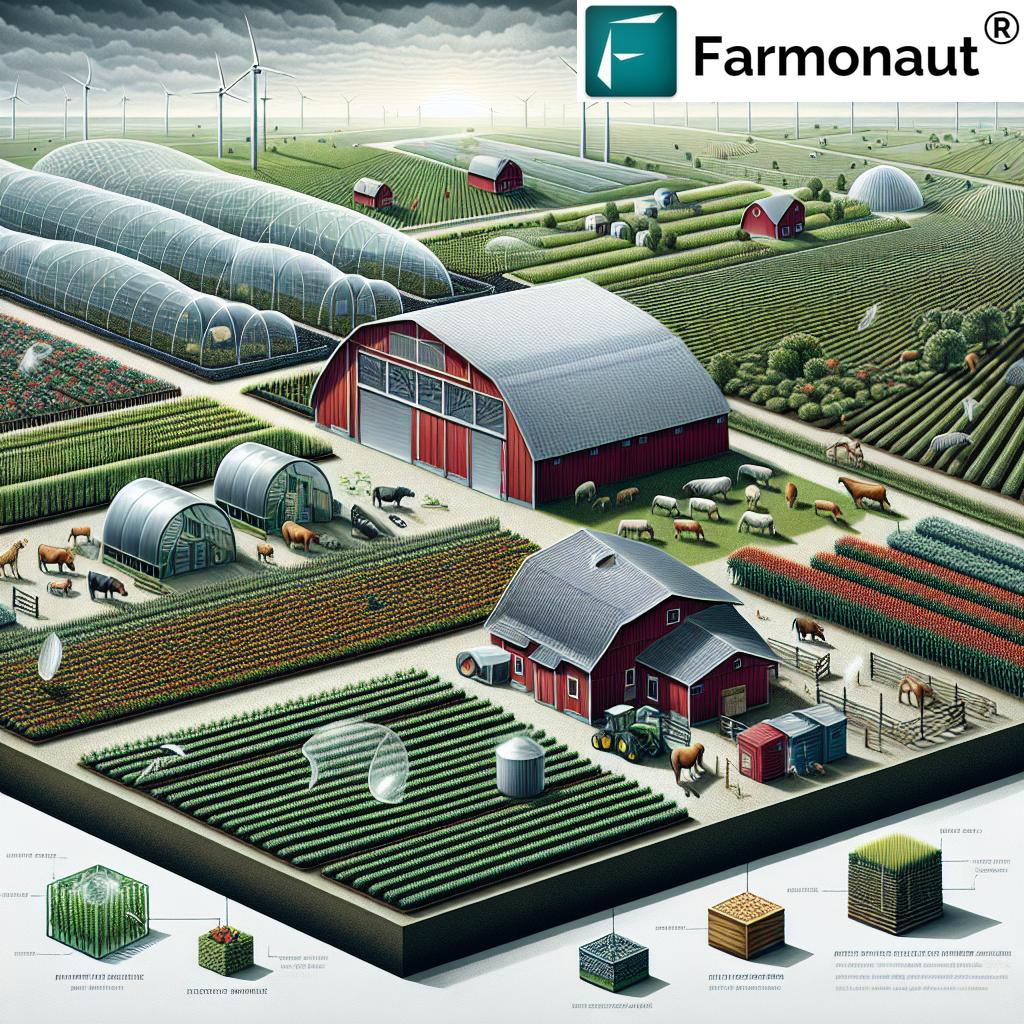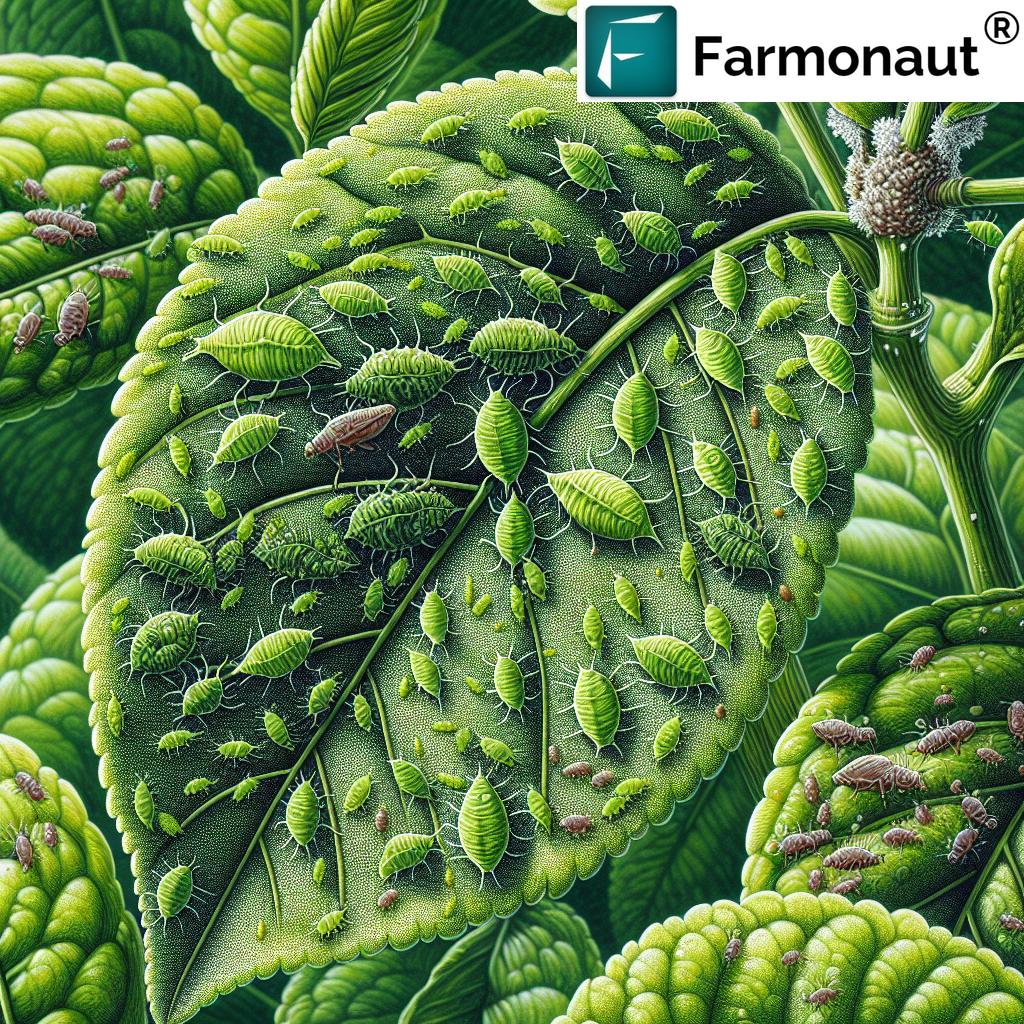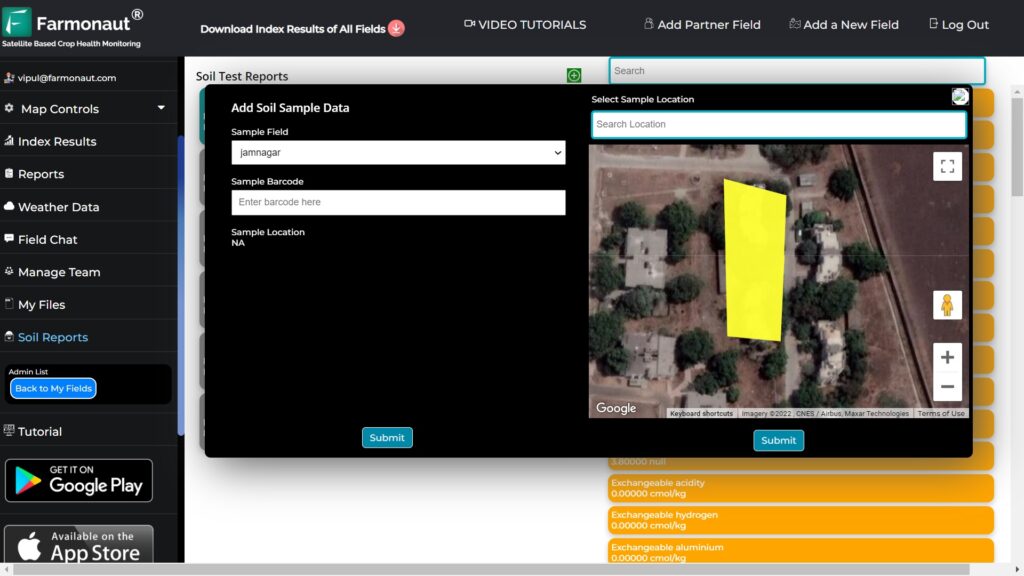Garden Soil Mastery: 7 Essential Tips for Fertility & Health
“Soil with 5% organic matter can hold up to 20,000 gallons of water per acre.”
Table of Contents
- Introduction
- Composition of Garden Soil
- Types of Garden Soil and Their Characteristics
- Soil Structure and Health: The Cornerstone of Fertility
- Soil pH and Nutrient Availability
- Garden Soil Mastery: 7 Essential Tips for Fertility & Health
- Tip 1: Add Organic Matter to Enhance Soil Fertility
- Tip 2: Practice Smart Mulching
- Tip 3: Implement Effective Crop Rotation
- Tip 4: Grow Cover Crops for Improved Structure & Nutrients
- Tip 5: Prevent Soil Compaction and Erosion
- Tip 6: Optimize Soil pH for Nutrient Uptake
- Tip 7: Support Beneficial Soil Organisms
- Soil Testing & Amendments: Targeted Management
- Comparison Table of Garden Soil Improvement Methods
- Leveraging Technology: Farmonaut’s Data-Driven Soil Management
- Frequently Asked Questions (FAQ)
- Conclusion
Introduction
Garden soil is more than dirt beneath our feet—it is a living, dynamic ecosystem that forms the foundation of all successful gardening. A healthy, productive garden depends heavily on soil that provides balanced nutrients, good structure, stable pH, and abundant organic matter to support plant roots and beneficial organisms. Understanding soil’s composition, types, and best practices for management is essential for maximizing plant growth, fertility, and overall ecosystem health.
In this comprehensive guide, we’ll walk through the fundamentals of garden soil—from its mineral and organic makeup to soil fertility improvement, ph, and amendments—before diving into seven practical tips to nurture soil structure and health for bountiful, sustainable gardens. Whether you’re enhancing a backyard plot in the USA, building kitchen gardens in India, or managing raised beds globally, these insights offer science-backed solutions tailored for vibrant and resilient gardening.
Composition of Garden Soil: The Essentials
To truly master garden soil, we must first appreciate its four primary components:
- Mineral particles: These include sand, silt, and clay, forming the bulk of soil mass and determining its texture, drainage, and fertility.
- Organic matter: Primarily decomposed plant and animal residues (like leaves, roots, and manure), which enrich soil with nutrients and improve its physical structure.
- Water: Occupies pore spaces between particles, critical for nutrient uptake by roots and overall plant health.
- Air: Fills other pore spaces, facilitating root respiration and supporting soil organisms like earthworms and microbes.
The interplay between these elements influences soil properties—retention of moisture and nutrients, resistance to compaction, and the efficacy of fertility improvement efforts. Proper management and continuous improving of these components are vital for cultivating the best soil for gardening.
Types of Garden Soil and Their Characteristics
Types of garden soil are classified based on the relative proportions of sand, silt, and clay. Each type offers unique strengths and challenges for plant growth:
- Sandy Soil: Dominated by large sand particles, this soil drains quickly and is easy to work with, but suffers from low nutrient retention. Best suited for plants that require well-drained conditions, like lavender or succulents.
- Clay Soil: Comprised of fine clay particles, this soil retains water and nutrients well but may become compacted and waterlogged. Ideal for moisture-loving plants such as irises and willows.
- Silty Soil: Smooth to the touch, silty soil is fertile, retains moisture better than sandy types, and is easy to work with. Excellent for a range of vegetables and flowers.
- Loamy Soil: The ideal garden soil—a balanced mix of sand, silt, and clay. It offers good drainage, nutrient retention, and aeration, and is generally considered the gold standard for productive growth.
- Peaty Soil: High in organic matter, this soil retains moisture well and is slightly acidic. Suited to acid-loving plants such as blueberries, azaleas, and rhododendrons.
- Chalky Soil: Alkaline, often stony, and rich in calcium carbonate. While it drains well, it may require amendments to lower pH for some acid-requiring crops.
**Knowing your soil type empowers you to choose the right soil amendments for gardens and tailor your gardening practices for a healthy, balanced ecosystem.**
Soil Structure and Health: The Cornerstone of Fertility
Soil structure refers to how particles (sand, silt, clay) are arranged into aggregates. Good structure improves water infiltration, root penetration, aeration, and nutrient retention—all crucial for healthy plant growth.
Organic matter in soil plays a crucial role in binding particles into aggregates, enhancing porosity and the soil’s ability to retain water and nutrients without becoming waterlogged or compacted. (Read more on soil structure).
Humus, the final stage of decomposed organic matter, is vital for soil fertility improvement. It provides nutrients for plants, supports beneficial soil organisms, and protects against erosion by stabilizing aggregates.
Soil pH and Nutrient Availability: Unlocking Plant Health
“Optimal garden soil pH for most vegetables ranges from 6.0 to 7.0 for best nutrient uptake.”
The pH of your soil is a critical determinant of nutrient availability and microbial activity. Most plants thrive in soils with a pH between 6.0 and 7.0 (slightly acidic to neutral). Outside this range, certain nutrients become inaccessible, and microbial processes slow, resulting in poor growth and health issues for your garden crops.
Regular soil testing allows targeted improving soil pH with proper amendments: add lime to raise pH or sulfur to lower it as needed.
Garden Soil Mastery: 7 Essential Tips for Fertility & Health
Let’s dig into practical, actionable ways to achieve soil fertility improvement and optimal garden soil health for productive plant growth:
Tip 1: Add Organic Matter to Enhance Soil Fertility
The organic matter in soil—such as compost, well-rotted manure, and mulched cover crops—is the cornerstone of soil enrichment. As organic matter decomposes, it increases nutrient levels, improves structure, enhances water retention, and supports beneficial soil organisms.
- Incorporate 2–3 inches of compost or aged manure into the top 6–8 inches of garden soil annually to support healthy growth and fertility.
- Use Farmonaut’s large-scale management app for satellite-based tracking of organic biomass and soil moisture.
Tip 2: Practice Smart Mulching
Mulching involves applying a layer of organic materials—such as straw, wood chips, or shredded leaves—on top of your soil. Not only does this retain moisture and suppress weeds, but as mulch breaks down, it adds organic matter and further supports soil organisms.
- Apply 2–4 inches of mulch depending on local climate and plant requirements.
- Compost-enhanced mulching provides an ongoing supply of nutrients and builds long-term soil health.
Mulching Tip: For pest resistance and best aesthetic results, alternate materials seasonally and ensure mulch is not piled directly against plant stems or trunks.
Tip 3: Implement Effective Crop Rotation
Rotate plant families each season (e.g., move leafy greens, root crops, fruiting crops, and legumes through different beds) to prevent nutrient depletion, disrupt the life cycle of pests and diseases, and maintain long-term fertility.
- Certain crops (like beans and peas) fix nitrogen, enriching soil nutrients for the crops that follow.
- Refer to your soil type—sandy soils may need shorter rotations to avoid nutrient leaching.
Tip 4: Grow Cover Crops for Improved Structure & Nutrients
Cover crops—fast-growing plants like clover, vetch, rye, and oats—are grown during off-seasons or between crop cycles. These solutions offer dual benefits:
- Prevent erosion: Dense root systems hold soil particles against wind/rain washout (soil erosion prevention).
- Add organic matter: When mown/tilled in, covers decompose to enrich soil content and feed beneficial soil organisms.
- Enhance fertility: Leguminous cover crops fix nitrogen and boost nutrient cycling for subsequent growth.
Tip 5: Prevent Soil Compaction and Erosion
Foot traffic, machinery, and heavy rains can compact soil and trigger surface erosion, reducing pore spaces for air, water, and root growth while depleting topsoil—the most fertile layer.
- Use permanent paths and limit activity on wet soils to minimize compaction.
- Employ contour planting, terracing, and mulch application for soil erosion prevention.
- Plant ground covers and retain mulch coverings to shield soil particles from wind and water scouring.
If managing large tracts or in need of monitoring soil compaction and erosion risks, Farmonaut’s fleet management tools assist in tracking equipment usage and field access for better conservation planning.
Tip 6: Optimize Soil pH for Nutrient Uptake
Adjusting and improving soil pH ensures that nutrients in the soil are available to plants. If soil testing reveals pH outside 6.0–7.0 for most crops:
- Add agricultural lime to raise pH in acidic soils (peaty or heavy loam).
- Add sulfur (or acidifying organic materials) to lower pH in alkaline soils (chalky or calcareous types).
- Target application rates based on soil type: Clay soils require more amendment than sandy soils for the same result.
For advanced monitoring and large-scale guidance, Farmonaut’s API offers satellite-based insights on soil health. Developers can integrate this with their field tech using our API documentation.
Tip 7: Support Beneficial Soil Organisms
A diverse array of soil organisms—from earthworms to bacteria and fungi—drive nutrient cycling, enhance soil structure, and protect against disease.
Encourage biodiversity by:
- Maintaining organic matter levels and avoiding broad-spectrum pesticides.
- Planting diverse crops, rotating families, and providing undisturbed or mulched areas for habitat.
- Soil organism trivia: Earthworms can process up to 10 tons of soil per acre per year!
For more about the role of organisms in soil biology, see this detailed resource.
Soil Testing & Amendments: Targeted Management
Regular testing is essential to understand your soil’s current pH, nutrient levels, and deficiencies. Lab testing is best, but reliable kits are available at garden centers too.
Based on your results:
- Add amendments: Choose targeted fertilizers (synthetic or organic), lime for acidity, or gypsum for structure in clay-rich soils.
- Monitor regularly and adapt practices (such as crop choices, irrigation needs, or pH improvement).
- For field-wide monitoring, satellite data can track soil moisture, crop growth stages, and even organic carbon levels, as provided by our Farmonaut platform.
Explore soil structure and health with a single platform using Farmonaut’s real-time crop and soil monitoring tools.
Soil Amendments for Gardens: Popular Options
Common soil amendments and their roles include:
- Compost: Rich in decomposed organic matter, improves structure, water retention, and nutrients.
- Manure: Adds nutrients and organic content (must be well-rotted to avoid burning plants).
- Lime: Raises soil pH in acidic soils, improves structure in clay.
- Gypsum: Breaks up compacted clay, slightly lowers sodium, reduces surface crusting.
- Organic Fertilizer: Slow-release nutrient boost; enhances microbial activity and overall health.
Comparison Table of Garden Soil Improvement Methods
For clarity and quick selection, here is a table comparing leading soil improvement strategies. This table addresses “soil amendment comparison” and “garden soil tips” for both beginner and advanced gardeners alike.
| Soil Improvement Method | Estimated Effectiveness (1-5) | Recommended Application Rate | Estimated Cost ($/sq ft) | Impact on pH | Suitable Soil Types |
|---|---|---|---|---|---|
| Compost Addition | 5 | 2-3 inches incorporated per year | 0.08–0.15 | Minimal, may slightly lower with repeated use | All; esp. sandy, silty, loamy |
| Mulching | 4 | 2–4 inches as surface cover | 0.03–0.12 | Minimal, organic mulches may acidify slightly over time | All types |
| Cover Cropping | 4 | Sow in fall/spring, mow & till in at flowering | 0.03–0.05 | Legumes may lower slightly, grasses neutral | All, esp. erodible & nutrient-poor |
| Lime Application | 3 | 20–100 lbs/1000 sqft, based on pH test | 0.04–0.08 | Raises pH (reduces acidity) | Acidic, clay, peaty |
| Organic Fertilizer | 3 | Follow package, typically 25–50 lbs/1000 sqft | 0.06–0.10 | Minimal, slow-release nutrients | All types |
| Gypsum Amendment | 2 | 20–40 lbs/1000 sqft, annually as needed | 0.05–0.09 | Neutral, no effect on pH | Clay, saline soils |
| Crop Rotation | 5 | Change plant families annually/seasonally | Minimal (planning, no material cost) | None | All |
How to Use This Table:
Strike a balance by combining 2–3 different methods, e.g., annual compost and mulch, plus lime only if acidity is high. Select those best for your unique soil type and gardening goals.
Leveraging Technology: Farmonaut’s Data-Driven Soil Management
Today’s soil management is evolving with the advent of satellite-based agricultural technology. At Farmonaut, we integrate real-time satellite data, AI-driven analytics, and user-friendly mobile/web applications to help farmers and gardeners monitor their land’s health and make informed, sustainable decisions.
- Real-time soil health tracking: We use multispectral satellite images to assess crop health, soil moisture, and even organic carbon levels worldwide.
- AI-based advisory: Our Jeevn AI system suggests optimal amendment, irrigation, and planting timings based on live soil and weather data.
- Blockchain-based traceability: For businesses seeking secure, verified farm-to-market tracking, learn more about Farmonaut Traceability Solutions and its supply chain benefits.
- Fleet/resource management: For agribusinesses and corporate farms, our fleet management tools enable oversight of vehicle and machinery resource allocation.
- Carbon footprinting: Our carbon tracking solution enables you to reduce environmental impact while monitoring compliance and sustainability metrics—especially valuable in regenerative and large-scale gardening practices.
- Crop loan and insurance: We offer banks and lending institutions secure, satellite-verified data for risk assessment.
For commercial-scale or community gardens, discover Farmonaut’s crop plantation and forest advisory for multi-location oversight, pest forecasting, and resource optimization.
Frequently Asked Questions (FAQ)
What is the best garden soil for growing vegetables?
The best soil for gardening vegetables is loamy soil, which balances sand, silt, and clay for good drainage, nutrient retention, and aeration. Amending with organic matter further boosts fertility and structure.
How do I test and amend my garden soil pH?
Use a soil test kit or send a sample to a lab for precise pH assessment. If pH is below 6.0, add lime to raise it; if above 7.0, use sulfur or organic materials to lower it. Repeat testing annually for optimal nutrient availability.
How often should I add compost or mulch to my garden beds?
Apply 2–3 inches of compost and 2–4 inches of mulch once or twice per year, ideally in spring and/or autumn. This maintains organic content, moisture, and suppresses weeds.
Can I improve sandy or clay soil for better plant growth?
Absolutely. Sandy soils benefit most from regular organic matter addition (compost, mulch, cover crops) for better nutrient retention, while heavy clay soils are improved with gypsum, organic amendments, and avoiding compaction. Both approaches build the best soil for gardening over time.
Why are beneficial soil organisms important for garden health?
Beneficial soil organisms break down organic residues, recycle nutrients, improve structure, and suppress pathogens, all of which support healthy growth and robust yields.
Are there any satellite tools for monitoring garden soil remotely?
Yes, Farmonaut provides satellite-based crop and soil health insights, accessible via web or mobile apps, that help identify moisture issues, targeted fertility improvement needs, and monitor crop progress without needing expensive field sensors.
Conclusion
Garden soil is the living foundation of every successful garden; its health shapes plant productivity, nutrient cycling, and ecosystem balance. By understanding soil composition, identifying your types of garden soil, and employing proven soil fertility improvement techniques—from adding organic matter and optimizing pH to supporting a community of beneficial organisms—you’ll unlock the path to a lush, productive, and resilient garden.
Commit to regular monitoring and proactive management for soil structure and health. Harness modern technology—like Farmonaut’s satellite and AI-driven insights—for sustainable, precise gardening. Remember, the best soil for gardening is not inherited, but cultivated by continuous care.
Ready to transform your soil and garden? Access Farmonaut’s powerful solutions for gardeners, farmers, and agribusinesses—and be part of a global movement towards more productive, sustainable land management.



